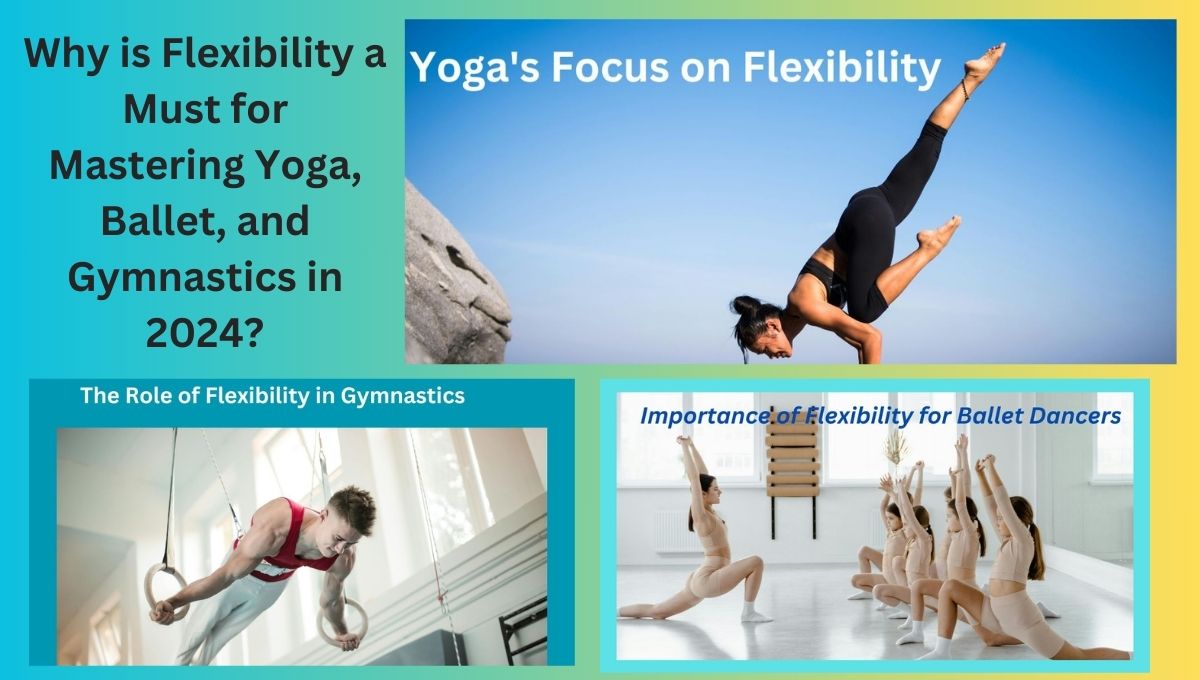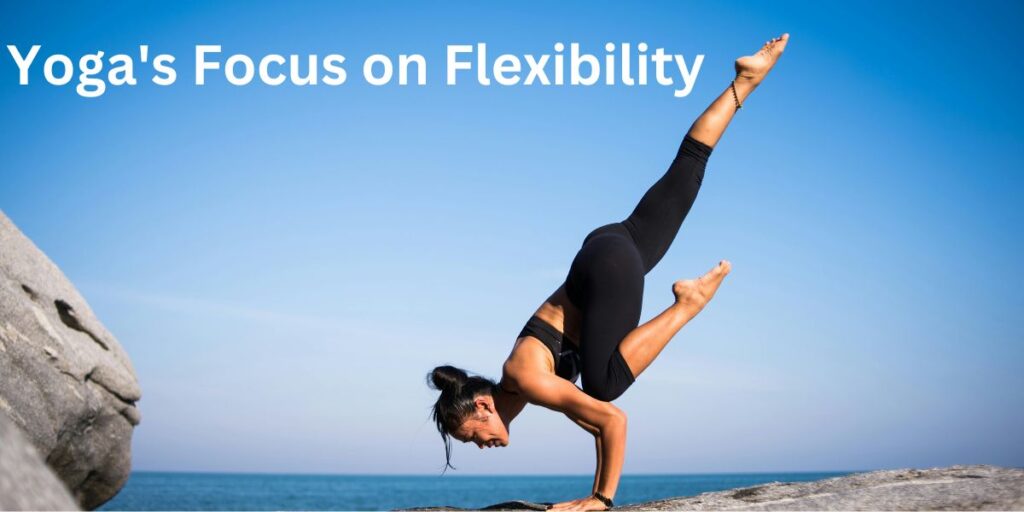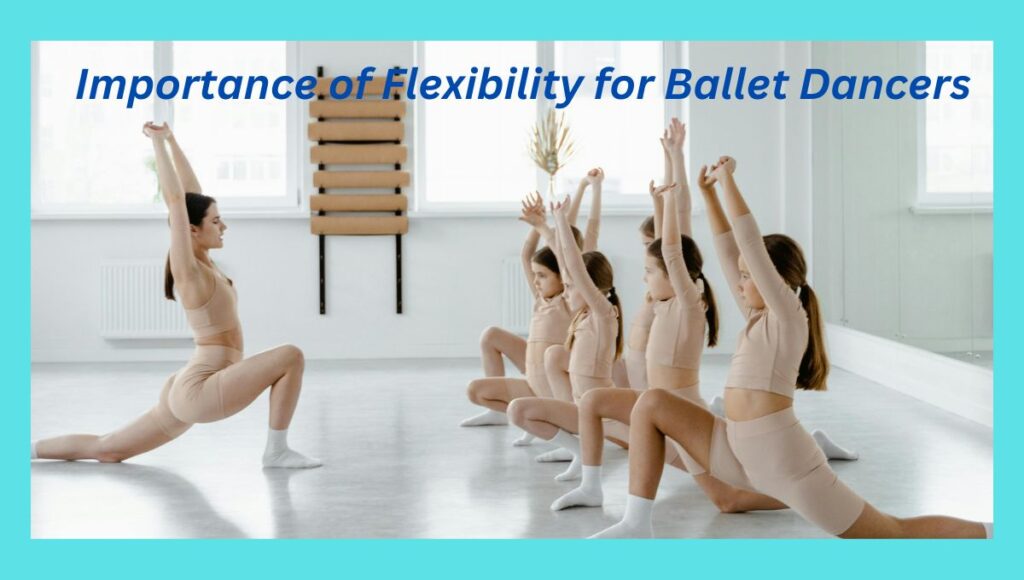Why is Flexibility a Must for Mastering Yoga, Ballet, and Gymnastics in 2024?
1. Introduction
The importance of flexibility has always been pronounced in disciplines like yoga, ballet, and gymnastics, but in 2024, it is more crucial than ever. As these practices evolve with new training methods and trends, mastering flexibility has become a foundational skill for anyone seeking to excel. This article explores the significance of flexibility in these three disciplines and provides insights on how practitioners can enhance their flexibility to optimize their performance.
2. The Science of Flexibility
What is Flexibility?
Flexibility is the ability of muscles and joints to move through a complete range of motion, which is important for mobility and proper body mechanics. It is especially crucial in activities that require balance, strength, and precision, such as yoga, ballet, and gymnastics.
How Flexibility Affects the Body
Being flexible improves movement efficiency by reducing muscle resistance, enhancing posture, alignment, and functional movements, therefore allowing athletes to move with greater ease and less risk of injury.
Key Muscles and Joints Involved
Muscles like the hamstrings, hip flexors, and lower back muscles, as well as joints like the shoulders and hips, are particularly involved in flexibility exercises. Maintaining the elasticity of these muscles is crucial for long-term performance.
3. Why Flexibility is Crucial in Yoga
Yoga’s Focus on Flexibility
Yoga is built on the principle of flexibility, with most poses designed to stretch and lengthen muscles. Flexibility in yoga allows for deeper poses and smoother transitions, contributing to both physical and mental well-being.
Types of Flexibility in Yoga
Yoga requires both static and dynamic flexibility. Static flexibility involves holding a stretch for a longer period, while dynamic flexibility involves controlled movements that stretch the muscles to their limit.
Common Poses and Flexibility Needs
Poses such as the forward fold (Uttanasana) and splits (Hanumanasana) require high levels of flexibility, especially in the hips and hamstrings.
4. Flexibility in Ballet
Importance of Flexibility for Ballet Dancers
Ballet is a discipline of grace and fluidity, which can only be achieved with extensive flexibility. The more flexible a dancer is, the more refined their lines and extensions appear, crucial for advanced choreography.
Ballet Techniques Requiring High Flexibility
Techniques such as grand jetés and arabesques require exceptional flexibility, especially in the legs, hips, and back. Without flexibility, achieving the aesthetic required in these movements would be impossible.
5. The Role of Flexibility in Gymnastics
Flexibility for Power and Grace
Techniques such as grand jetés and arabesques require exceptional flexibility, especially in the legs, hips, and back. Without flexibility, achieving the aesthetic required in these movements would be impossible.
Key Movements in Gymnastics Requiring Flexibility
Flexibility is essential for gymnasts to perform key movements such as the handstand, walkover, and uneven bar routines. Gymnasts need to extend their range of motion to ensure fluid and precise movements during competitions.
6. Benefits of Flexibility Across Disciplines
Enhanced Performance
Flexibility enhances performance by increasing the range of motion, enabling athletes to execute movements with greater precision and efficiency.
Injury Prevention
Improved flexibility reduces the risk of muscle strains and joint injuries, as it keeps the body supple, minimizing resistance and overextension during challenging poses or movements.
Mental and Physical Health Benefits
Flexibility training can also have a calming effect on the mind. Stretching promotes relaxation, reduces tension, and fosters a sense of balance between the body and mind.
7. Training Techniques for Flexibility
Stretching Techniques
Stretching techniques like PNF (Proprioceptive Neuromuscular Facilitation) and passive stretching are highly effective for improving flexibility. Both methods encourage deeper stretches and muscle elongation.
Dynamic vs. Static Stretching
Dynamic stretching, involving controlled movements, prepares muscles for activity, while static stretching, holding a position for 20-30 seconds, is ideal for cooling down and improving long-term flexibility.
Progressive Flexibility Training
To achieve long-lasting flexibility, it’s important to follow a progressive training program that gradually increases the range and intensity of stretches.
8. Flexibility and Age
Flexibility Declines with Age
Flexibility naturally decreases with age due to muscle stiffness and joint degeneration. However, regular flexibility training can slow this decline.
Maintaining Flexibility in Older Adults
Yoga and stretching routines are excellent for maintaining flexibility in older adults. Programs tailored for aging bodies focus on gentle movements that maintain joint health and muscle elasticity.
Yoga and Ballet for Aging Bodie
Gentle yoga and ballet barre classes are becoming increasingly popular for older adults, helping them stay limber and physically active.
9. The Flexibility-Mind Connection
Mental Relaxation through Flexibility
Mind-Body Balance in Yoga, Ballet, and Gymnastics
Yoga, ballet, and gymnastics each rely on achieving a harmony between mind and body, with flexibility training acting as the bridge that strengthens this connection.
10. Role of Nutrition in Flexibility
Hydration and Muscle Elasticity
Proper hydration is essential for muscle elasticity, as it helps maintain muscle suppleness and prevents cramping during stretches.
Nutrients Supporting Flexibility
Nutrients like magnesium, collagen, and omega-3 fatty acids support muscle health and flexibility by promoting tissue repair and reducing inflammation.
11. Flexibility Trends in 2024
Popular Stretching Routines
In 2024, stretching routines like fascial stretching and mobility-focused programs are gaining popularity for their deep tissue benefits.
Emerging Flexibility-Enhancing Technologies
Innovative tools like stretching machines and wearable flexibility trackers are being used by athletes to optimize flexibility training.
12. Flexibility Myths and Misconceptions
Myths Surrounding Flexibility Training
One common myth is that only certain people are “naturally flexible.” In truth, flexibility can be improved by anyone with proper training.
Debunking Common Misconceptions
Another misconception is that flexibility training alone leads to injury. When performed correctly, flexibility exercises actually prevent injury and promote overall strength.
13. Case Studies: Mastering Flexibility
Yoga Practitioner Story
A yoga practitioner who struggled with tight hips and back pain shares how regular flexibility training transformed their practice.
Ballet Dancer Journey
A ballet dancer details how stretching consistently allowed them to achieve better arabesques and higher jumps.
Gymnast Success Story
A gymnast reveals how improving flexibility helped them excel in competitions, adding precision to their routines.
14. Future of Flexibility in Sports
Emerging Research on Flexibility
Studies show the growing importance of flexibility training for overall fitness and longevity. Athletes in all fields are making flexibility a core part of their regimen.
How Flexibility Will Continue to Influence Training
As more research is conducted, flexibility will likely be incorporated into mainstream fitness programs, with an emphasis on holistic well-being.
15. Conclusion
Flexibility is a crucial aspect of mastering yoga, ballet, and gymnastics. It not only improves physical performance but also enhances mental health and helps prevent injuries. As training methods advance, the significance of flexibility will continue to increase, making it essential for any athlete or practitioner in 2024.




